As a customer success manager, I can confidently say that companies with robust customer retention strategies have higher customer retention rates.
In this article, I’ll walk you through key strategies that will help you retain your customers and grow your long-term revenue.
Table of Contents
- What is customer retention?
- How to Retain Customers
- Excellent Customer Retention Strategies
- Customer Retention Programs
What is customer retention?
Customer retention is how businesses quantify their customer loyalty over time, gauge overall success, and indicate their place in the market.
After making the sale, it’s time to focus on keeping those customers around (HubSpot’s Post-Sale Playbook can help you out here). In my experience, there are numerous ways to measure customer retention, which can dictate how your customer success or other post-sale teams are approaching how to retain your customers.
To boost customer retention, companies will implement various strategies to reduce the number of customers lost — or customer churn — in a period and better their overall experiences to ensure that they remain loyal to the business. I’ve found using software to track your analytics can be a huge help here.
How do you calculate your customer retention rate?
To calculate the customer retention rate, you have to divide the total number of customers minus new customers by the number of customers acquired at the beginning of the period.
The formula should look like this:
Customer Retention Rate = (Total # of Customers at the end of the Period – New Customers Acquired) / Customers at the Start of the Period

Do keep in mind that while not listed in the graphic, the customer retention formula is incomplete without knowing customer churn.
To help you yield more accurate calculations, we've created a Customer Churn Analysis Template. Use this template to store and analyze qualitative and quantitative feedback to better understand and reduce your churn rate — and increase retention
Now that you know how to calculate your customer retention rate, let’s take a look at how you can improve that metric by retaining more of your customers.
Pulling from my personal experience in customer success as well as discussions with industry experts, I’ve compiled the top 11 ways to retain your customers. I consider these foundational concepts that can be applied to any organization or industry.
1. Acquire the right kinds of customers.
While it’s natural for a business to want to close as many sales as possible, there are some instances where a business should ensure they’re bringing on customers who can actually be successful with their offering.
Specifically in the B2B space, I’ve seen companies sign on a new customer who really shouldn’t have even purchased the product. Ask any CSM and they’ll tell you about at least one customer who signed the contract thinking that they could do one thing, only to be told in the post-sale process that they actually can’t achieve that outcome with the product.
When this happens, the post-sale teams end up needing to help the customer create workarounds or build custom solutions, which is costly and time-consuming. Additionally, it’s a poor experience for the customer right from the start, and chances are they’re going to be less likely to renew when the time comes.
To avoid this, I recommend starting by really understanding your ICP and making sure your marketing materials accurately reflect what can be accomplished with your product or offering. If you’re in B2B, enable your sales team to understand whether a customer is a good fit or not and equip them to have those hard conversations early on if necessary.
Since acquiring new customers costs your business more than retaining current customers, ensuring that the customers you’re bringing in the front door will be successful with your product sets them up to stay for the long haul.
2. Create a seamless post-sale transition.
After a customer completes a purchase, the real customer experience journey begins. You’ll want to make sure that the customer has a seamless transition from the sales conversation into their post-sales journey.
By ensuring your account management team has important details about the customer like their goals for purchasing your product, you’re showing the customer that your company really cares about helping them achieve success. This in turn builds trust with the customer and makes them feel confident in your ability to support them.
If you have a dedicated sales team, I suggest the following steps:
Note: “Account Team” here can mean Onboarding, Customer Success Manager, or Account Manager — anyone who is going to run the relationship post-sale falls into this category.
- Have your sales team take detailed notes in their sales software, including why the customer purchased the offering and what pain points they were trying to solve for.
- If you have a post-sales account team, create a process for the sales handoff to the post-sale team. This could be a document that the sales team fills out to pass along to the account manager or an internal handoff call between the two internal parties.
- If your sales team discusses any metrics or specific goals the customer wants to achieve during the sales process, make sure these are passed along to the account team after the sale is complete.
- Once the account team has been briefed on the customer, the sales team should do a warm handoff via email.
Emily Andrews-Rice, enterprise customer success manager at GreatQuestion, reinforced the need to understand a customer’s goals early on, saying, “Make sure you truly understand the customer’s priorities and continue to check in on this. Instead of just asking ‘What are your goals?’ on a kick-off call, ask ‘Why did you buy our product?’ Goals can often be vague, but knowing why someone purchased the product gives you an anchor point for onboarding and well into renewal months later.”
If you don’t have structured pre- and post-sale teams, you’ll want to build an automated post-sale experience that makes sense for your customer. This might look like sending a follow-up email immediately after the sale inviting customers to do things like:
- Join your user community to share ideas and get tips.
- Visit a link that provides step-by-step instructions to set up their product.
- Visit a blog article that helps them find creative ways to use your offering.
- An email inviting them to join your VIP group.
Pro tip: If you have structured pre-sale and post-sale teams, I highly suggest doing a live kickoff call with the customer after the deal is signed. In that call, go over the reason they purchased your product, what metrics or goals they care about achieving, and then talk about how you’ll help them get there. (By talking about goals and metrics early on, you’ll make it easier to show value and ROI, which we’ll talk about shortly!)
3. Build a strong onboarding program.
If I find a new product or service difficult to use, there’s a low chance I’ll continue to pay for it. This is the reality for most customers, which is where a solid onboarding program can help.
Data shows that businesses with robust onboarding programs see a significant increase in customer retention, and onboarding is especially critical to retaining customers who purchase subscription-based SaaS offerings.
I work in the digital customer success space, and something I hear often is, “If you don’t know where to start with improving the customer experience, start with onboarding.” The onboarding phase can make or break the customer’s experience.
Marisa Smithers, senior manager of enterprise customer success at Drata, shared with me how her team is hyper-focused on total time-to-value, which begins in onboarding.
She said, “One critical component of our customer success strategy at Drata is around Total Time to Value (TTV). This is a newish approach to thinking about the length of time it takes to get customers onboarded and seeing value from the product.”
She explained that her team has identified different stages along the customer journey with specific graduation criteria, with a goal to get customers to value in less than 90 days. She told me, “We find that customers know within 30 days if they will renew or not and our goal is to make sure that customers are seeing value as quickly as possible.”
By building a robust onboarding program, you ensure that your new customers know how to use your product or service, effectively helping them see value with it early on. Here are a few ideas to consider for your onboarding program:
- Look at the entire onboarding journey holistically. Whether it’s a 30-, 90-, or 180-day journey, what are the actions the customer needs to achieve in that timeframe to see value with your product? From there, build your content and communication strategy.
- Create multi-media support during onboarding to cater to all learning styles. This could look like having a dedicated chatbot just for customers in onboarding, or hosting a series of “getting started” video tutorials in your customer community.
- Automation is your friend in onboarding. Sending automated emails based on things like customer milestones, adoption activity, or other customer behavior is a great way to get prescriptive guidance in front of your customers early on in their journey.
Pro tip: Find ways to help customers get “easy wins” early on in the product, and then celebrate them. In one of my previous roles, we had an automatic email sent to new customers that congratulated them on booking their first sales qualified meeting with our chatbot. This is an easy way to reinforce value to customers.
4. Make it easy to see ROI.
No matter what kind of relationship you have with a customer, the reality is that if they aren’t seeing value with your product, they’re not going to continue paying for it.
In the last few years there’s been a heavy emphasis on companies “cutting IT sprawl” and consolidating their tech stack, with one study showing software spend is being reduced by around 30%. This creates tougher renewal conversations for account teams in the B2B space and now often requires renewal discussions with new stakeholders like the procurement team and the CFO.
BizTech notes that experts say the cost-cutting is also a symptom of a cost-conscious culture where IT leaders want a transparent evaluation of ROI.
While it might feel intimidating for your account teams to talk about ROI with customers, Sara Rhude, senior manager of customer success at Canto, shared with me how talking about value with customers has positively impacted their business.
“One of the most impactful things we’ve done is enable our CSMs to really speak to value. We created a set of business objectives that resonate across most of our client base, and tied them to success criteria our product can directly influence.”
She went on to tell me, “Retention always comes down to the value customers perceive — so when our team can frame conversations around outcomes that matter to them, it positions us as part of their process, not just another vendor.”
As you can see, it’s critical to make it easy for your customers to see ROI if you want to retain them.
Here are a few ways to consider doing this.
- For a software solution, your customers should easily be able to see their ROI in the product. For example, if you’re in martech, can your users easily see the pipeline generated or qualified leads captured with your offering?
→ Customers shouldn’t have to wait for a QBR to get this information.
- If you haven’t already, take time to clearly define the ROI indicators that your product offers and have customers identify with one or more of them as they come on board.
→ This will make it easier for your account team to surface ROI metrics that the customer cares about in their ongoing conversations with them, like Rhude mentioned.
- Find ways to get suggestions and strategic recommendations in front of your customers that will help drive ROI.
→ Consider segmenting your customers by ROI indicator and sending targeted campaigns that include tips and tricks, guidance, and even live webinars tailored to each indicator.
Pro tip: I’ll admit that this isn’t always easy to achieve, especially if your product pitch is around time savings or preventative action. I worked in the identity security space for a while and our product prevented things from happening, so it could be difficult to translate ROI.
In these situations, get creative and determine what metrics you do have access to that could resonate with them, like highlighting the number of times they’ve used an in-product automation that was designed to replace a manual action.
5. Identify and mitigate risk.
Any customer success leader will tell you that if you aren’t flagging risk in your customer accounts, you’re setting yourself up to fail. I talked to a few experts in the field to get their insights on effective risk identification and mitigation.
When I asked Marley Wagner, head of customer success programs at EverHealth, how risk detection impacts customer retention, she highlighted how important it is to ensure that you’re detecting risk early on.
“Time and awareness are the two most important factors when it comes to risk mitigation — the more of each you have, the stronger your ability to impact customer retention. With risk alerts or notifications, and even more so by receiving those well before a customer’s renewal date, you’re not only raising awareness, but you’re buying yourself time.”
So not only do you need to detect the risks, but you need to make sure that you’re doing it early enough to be able to appropriately mitigate them.
You might be wondering what exactly constitutes a key risk indicator within a customer account.
Smithers shared that there’s a variety of factors that play into risk within customer accounts, saying, “Key risk indicators are things like champion and exec buyers leaving, low product adoption, not understanding a customer’s business drivers for purchasing the product to begin with, merger and acquisition, or product feature incompatibility.”
She reinforced the importance of having a plan in place for the risk that’s been identified, saying, “Having a firm handle on those indicators and leveraging a concrete save play to mitigate them will always impact customer retention.”

Here are a few suggestions to help you identify and mitigate customer risk:
- Build a customer health score or similar measurement to track those key risk indicators, and pair it with formal save plays for each type of risk.
- Leverage AI tools to detect customer sentiment across all interactions. You can then create a workflow to notify your account teams when negative sentiment is recognized. This is a good way to glean insight into customer sentiment more regularly, versus just waiting for an NPS survey to be completed.
Pro tip: Every quarter, I leverage AI to analyze customer feedback and support tickets to look for themes, and then I use that information to address friction points in the customer journey. By doing this regularly I’m able to continually build proactive measures that help mitigate risk.
6. Implement a customer feedback loop.
Listening to your customers is critical if you want to create a thriving company. Make sure that you’re providing multiple opportunities for customers to provide you with feedback on everything from their experience to potential product improvement ideas.
Surveys like NPS and CSAT are table stakes and should be part of your existing feedback plan, but there’s always an opportunity to check in with your customers more regularly to hear what they’re thinking.
This might look like hosting customer round-tables, having someone on your C-suite meet with your high-touch customers, or even just checking in with your customers from time to time in a less formal way.
Andrews-Rice shared with me how important it is to check in with your customers ad-hoc, in addition to the formal feedback opportunities. “Most customers won’t have any problem telling you what’s going wrong, but it can be hard to remember to find out what they think is going well.”
She explained that checking in often and finding out what is working can benefit how you prepare for the renewal conversation, saying, “Checking in with them on what is working allows you to frame the right messaging about pricing, package options, and the next year’s strategy in the renewal conversation.”
Whichever way you receive customer feedback, make sure you’re able to act on it, or “close the loop.” Customers feel heard when they know that you’ve taken their feedback into consideration, which in turn builds trust and enhances the relationship.
7. Create a customer communication strategy.
Your customers aren’t thinking about you nearly as much as you’re thinking about them. Because of this, they’re unlikely to see updates, announcements, or offers just by navigating to your website.
This is why it’s important to notify your customers about things like product updates or enhancements, new offerings, and ways that they can get even more out of their purchase with you.
By formalizing a customer communication strategy, you ensure that your customers get everything they need to be successful with your offering. Consider implementing a customer newsletter for frequent communications and leveraging in-app notifications for important and critical updates.
If you create a customer newsletter, be sure to look holistically at the customer email journey to make sure that customers aren’t receiving too many emails from different departments at your company. You should also do a contact management inventory before you launch an email program to ensure that you have the right contact information across your customer base.
Pro tip: Since my company rolls out product releases and enhancements quarterly, I host a quarterly customer webinar where our product managers demo those new features. Our customers love getting to see new features in action and having everyone in the same “room” to see the new enhancements creates a lot of excitement.
8. Start a customer education program.
Customer education is a critical component of customer retention. Whether you’re selling webcams directly to consumers or software to enterprise businesses, you should take the time to educate your customers on how to get the most value from your product.
In a 2022 study, Intellum reported that 56% of companies that implement a customer education program saw improved customer retention. And if you’re a company that isn’t leveraging customer education, there’s a good chance your competitors are, as 78% of high-success organizations have fully formalized customer education programs.
A typical customer education program may consist of:
- Short-form video training.
- Online academy courses or learning tracks.
- Product certifications.
- Help center articles/knowledge bases.
- Live events like webinars or training workshops.
When building your customer education program, leverage personalization where possible. If you have multiple personas using your product (or multiple product offerings), chances are you’ll need to create unique content for each persona and product.
Pro tip: My company’s customer education team just ran a campaign promoting our product certifications, and they were able to directly correlate an increase in health scores to the customers who completed product certifications. Higher customer health scores = better odds of retention! Check out HubSpot Academy for inspiration.
9. Offer live support.
While self-service options such as knowledge bases and support chatbots are critical, it’s also important to make it easy for your customers to connect with a human when they need to.
Customers today have high expectations, with one study by Khoros saying 79% of consumers expect a quick response when they reach out to a brand. I mean, who doesn’t want that, right?
The level of support customers receive directly correlates to their satisfaction with your product and brand, which directly impacts whether or not you’ll retain their business.
Depending on your industry and your buyer persona, find ways to meet your customer where they’re at with support options. If you’re in the D2C space, maybe you can offer support via social media channels or even offer support via text message.
If you’re in the B2B or B2C space, make sure that you don’t make it overly difficult for your customers to reach out to a human. Clearly list your available support options and make it frictionless to start the outreach process. (If you’re looking for inspiration, check out this article I wrote about great “Contact Us” pages.)
10. Prioritize the customer experience.
My favorite part about doing customer-facing work is getting to be my customers’ advocate. When we connect with customers and build relationships, we naturally want each interaction that they have with our product to be a good one.
Sometimes, if you’re not directly customer facing, it can be easy to lose sight of how processes or policies may impact the customer’s experience. A recent study showed that 61% of consumers said they’d switch to a new company after a poor experience, reinforcing that it’s more important than ever to be hyper-focused on the customer experience.
The most successful companies today are truly customer centric. Forbes reports that customer-centric organizations reap the benefits of focusing on the customer, reporting increases in profits, customer loyalty, and customer lifetime value.
What is customer centricity?
Customer centricity means prioritizing customer needs, preferences, and satisfaction when making business decisions. The goal of customer centricity is to create a customer experience that results in long-term loyalty.
The next time you’re building a process, creating a policy, or making a business decision, stop and consider how it will affect the customer’s experience. By stopping to really consider your customer, you can make sure that you’re building a company that puts your customer first, which will naturally make your customers want to stick around.
Here are a few questions to consider:
- How will this impact my customers’ needs, preferences, and satisfaction?
- Do we have customer feedback that can help inform this decision?
- Does this add value for the customer?
It goes without saying that you can’t be customer-centric if you aren’t talking to your customers, so before you can complete this step, make sure to create a feedback loop.
11. Reward customers for their loyalty and advocacy.
I’m a long-time customer of a big meal delivery company, and one of their recent promotions was offering an awesome free gift for new customers. I clicked on it and was disappointed to see that I don’t qualify for it because I’m not a new customer. Since I’ve been a customer of that company for years, it left me feeling slightly annoyed.
As a loyal customer, it can feel frustrating when all the effort and emphasis seems to be on new customers instead of taking the time to appreciate the customers who have been around for a while.
A simple token of appreciation makes customers feel more connected to your brand, and when customers feel connected to a brand they’re more likely to purchase from it and stay loyal to it, making it well worth your time to reward your long-haul customers.
You can do this in many different ways, but here are a few strategies I’ve seen work well for this:
- Grant them early access to new releases and beta testing programs.
- Give them invite-only access to product launches or events.
- Consider running a promotion where after a certain amount of time in their subscription, or upon renewal, they receive something for free (like a product add-on).
- Create a loyalty program that encourages customers to participate in advocacy efforts in exchange for rewards. People love swag!
- Ask them for a testimonial or invite them to speak at an event to share their expertise.
Pro tip: As you build out a loyalty program, consider offering higher-value incentives for advocacy efforts such as referrals and reference calls.
Now that I’ve covered the foundations of customer retention, let’s look at some more concrete customer retention strategies that you can implement for your business.
Excellent Customer Retention Strategies
In order to help you visualize how successful customer retention strategies can be for your business, I’ve compiled a list of my top 10 customer retention strategies.
I’m including examples of each strategy so that you can see it in action as well as my thoughts on why each one works so well.

1. Invest in customer service tools.
Keeping your customers happy is critical to retaining their business. Being able to promptly respond to their support queries is critical, as customers expect speedy responses and will often change companies if they have a poor experience with a brand.
As your company scales, you’ll need to make sure that you’re equipped to support your growing customer base. Youth on Course is a great example of how impactful support tools can be for a growing organization.
Customer Retention Strategy Example: Youth on Course
Youth on Course is a nonprofit committed to making golf affordable and accessible to youth by subsidizing green fees for junior golfers. When they started out, they were handling support inquiries via a Gmail inbox. As their organization saw rapid growth, they also saw a large increase in support requests which became hard to quickly respond to.
After a holiday weekend brought in 500 urgent emails, the director of member success, John Mothershead, realized that something needed to change.
Mothershead said, “I had to choose between canceling my vacation and letting members down. Either way, it wasn’t sustainable. And it was impacting what mattered most: our members’ ability to get on the course.”
John went on to invest in customer support tools, starting with a Service Hub. Leveraging this tool enabled customer requests to be turned into tickets (instead of emails) and the tickets were automatically organized, assigned, and answered via the Help Desk system.
The Youth on Course team saw a major transformation from using a Customer Agent, an AI-powered assistant that can answer commonly asked questions from members immediately.
Despite a large increase in support tickets, by leveraging customer service tools Youth on Course was actually able to improve customer response times and customer satisfaction.
The bottom line is that when your customers have a great experience and get their needs met, they’re more likely to stick around.
2. Offer to make things right.
Consumers want to know that when they spend their money with you, they’re going to get a quality product and experience in return. Unfortunately, things don’t always go as planned and your product or company may have an issue, like an outage or security vulnerability.
Whatever the mess up may be, you should always find a way to make things right (after apologizing, of course). While the “make-good” will vary by business, it’s important to try to offer something of value to the customer. It could be time with your professional services team, a discount on their subscription, or a redo of the original deliverable.
By offering to make things right, you build trust with the customer and show them you’re committed to keeping them happy. An apology is the bare minimum, but taking it a step further by offering a make-good is even better.
Customer Retention Strategy Example: Starbucks
Perhaps the most infamous name in coffee, Starbucks stands out to consumers for a few key reasons. They’re available nearly everywhere, their menu is consistent, and they’re always willing to remake your drink if you don’t like it.
I personally find that last one to be a major perk to ordering coffee with them. As you probably know, it’s hard to get a cup of coffee for under $8 anymore. Because $8 coffees add up quickly, I often find myself hesitant to try new drinks, like seasonal flavors, in case I don’t like them.
But that’s not the case at Starbucks. Their return policy specifically states, “If for any reason you are dissatisfied with your food or beverage item, let us know and we’ll gladly remake it for you.”
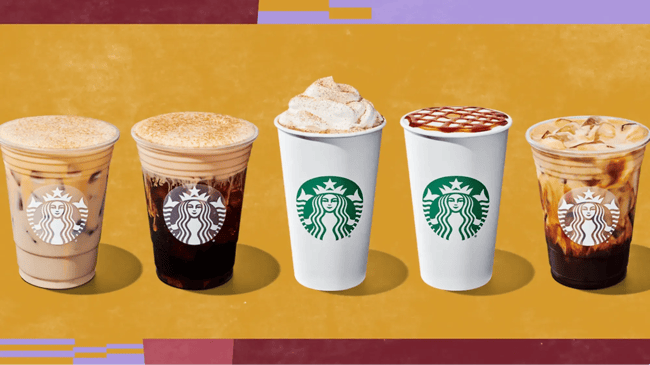
This return policy keeps me coming back to Starbucks, especially for seasonal items that I might be interested in trying (but I’ve learned that the PSL is definitely not for me).
By reassuring its customers that they’re committed to customer satisfaction, Starbucks keeps customers coming back for more and encourages them to try new things.
3. Make your customers feel special.
You want to make your customers feel special so that they keep coming back for more. This will look different for every industry, but it could be something as simple as offering a coupon code as a “thank you” to repeat customers, or inviting your long-time customers to a special invite-only event.
Think about your customer persona and consider what would make them feel special. I suggest taking it one step further and running some user research groups to find out what would make your customers feel appreciated.
You can also use loyalty programs here to help customers feel special by offering points per purchase, free shipping for loyal members, or gifts with purchase. Retail companies like Sephora do this really well, offering points on purchases and free shipping for rewards club members.
Customer Retention Strategy Example: Spoiled Child
Spoiled Child is a direct-to-consumer brand of wellness supplements that offers both subscription and one-time purchase options. When you subscribe, Spoiled Child always includes a surprise full-sized product with your shipment — and it’s always something you can’t get anywhere else.
By offering free items that can’t be purchased elsewhere, Spoiled Child makes receiving your monthly box feel special and exciting. In addition to that, each time you log in to adjust your subscription, you’re automatically greeted with customer-only discounts on additional products.
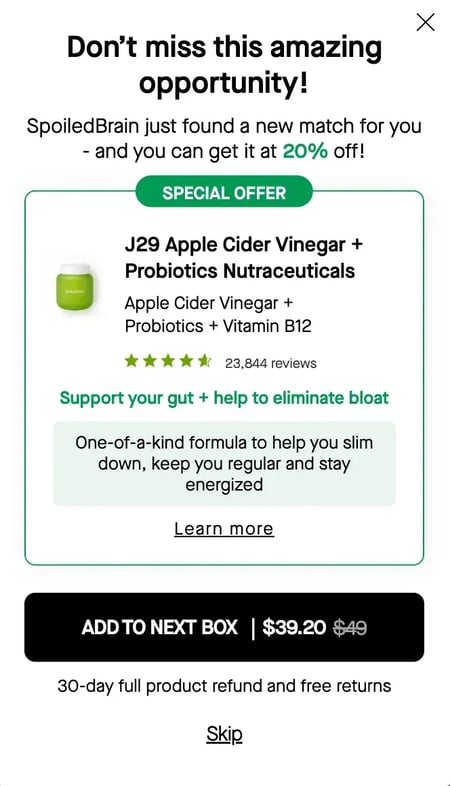
Spoiled Child shows their existing subscribers some extra love by offering them regular discounts and free products every month, which keeps things interesting and makes you want to stay subscribed so that you get the best price on their products.
4. Create a community.
Nothing beats connecting with other people who have similar goals and challenges. When companies create a community for their customers, they foster connection, networking, idea sharing, and advocacy all in one place.
User communities are a great place for customers to ask (or answer) questions, share creative uses for the product, network with others, and — perhaps most importantly — keep the conversation going around your product.
User-driven content feels more trustworthy to customers, and by hosting conversation spaces like communities, you empower customers to talk to each other about your product.
Customer Retention Strategy Example: Gong
Gong, an AI-revenue platform built for sales teams, has done a great job creating a user-driven community. Their community, Visioneers, encourages Gong users from different sales teams to join respective groups based on their role or interest so they can share ideas with others in the same industry.
Gong does a great job of crowdsourcing advocacy by incentivizing community members via their “Influencer Club.” Influencer club members can participate in advocacy activities that interest them to earn points they can later redeem for Gong swag or gift cards.

Gong also frequently runs contests for users and rewards them with Gong swag, making it fun to participate in. As a Gong user myself, I find their community efforts drive a lot of brand connection and loyalty for me, and they make using a software tool more fun!
5. Deliver excellent onboarding.
When it comes to purchasing a new product or software tool, customers usually face a learning curve. And as we talked about earlier, if your customers can’t quickly get up and running with your product offering, they’re going to get frustrated.
By creating an excellent onboarding experience, whether that’s in-app or through human-supported guidance, you ensure your customers create a solid foundation and are set up for success. Leveraging onboarding to help expedite the customer’s time-to-value means you’re more likely to retain their business.
Even if you think your product is simple enough to get started with, you should plan for an onboarding period anyway. If you’re in the D2C space, this could look like a series of emails that go out with a few key actions to take to get the most out of your product.
If you’re in B2B or B2C, you’ll want to map out the customer’s journey for the onboarding period, identify the “key milestones,” and then create the content and strategy to help them. Within that onboarding strategy, implement a few “early wins” that customers can achieve to make them feel accomplished with your product.
Customer Retention Strategy Example: Monday.com
When I came into my current role, I had never used Monday.com before, and I set out to get up to speed with the tool. I really like how they create an intuitive in-app onboarding experience for their users, including an interactive guide that encourages you to work alongside the instructions.
I think this is a great strategy as it helps users get comfortable completing common actions in the tool while watching how it should be done.

I also really like that Monday.com hosts regular office hours for customers who are new to using the tool. These live support sessions allow new customers to get their questions answered which helps them get comfortable with the tool more quickly.
They also give users quick access to key information a new user might need, like “getting started” or help docs, right on the homepage.
By offering a structured, in-app onboarding experience and live support opportunities, Monday.com helps its new customers quickly become proficient with the tool which directly contributes to customer retention.
6. Engage with your customers.
Customers today want to feel connected to the brands they shop with, and an easy way to create connection with your customers is to engage with them.
Reaching out to your brand should feel like a two-way conversation for your customers, so try to find engagement methods that feel dynamic. An easy way to do this is by encouraging discussions and replying to comments on social media.
Many brands actually leverage social media engagement to drive advocacy as well, by encouraging customers to post content with their product and use a specific hashtag.
Some companies even encourage their customers to reach out to them on social media for support, which I think is a nice touch if your business can support it.
By engaging with your customers across a variety of channels, you build a relationship with them and help them feel more connected to your brand, which in turn leads to a higher customer lifetime value.
Customer Retention Strategy Example: Wendy’s
You’d be hard-pressed to find someone who doesn’t know about Wendy’s social media game, but in case you’re unfamiliar, in 2017 Wendy’s went all in on social media and started engaging more with their followers and “trolling” their competitors. The results? They grew $64M in profits in just one year, and their success hasn’t slowed down since.
Wendy’s is truly engaging with their audience via social media channels by responding to comments, participating in light-hearted banter, resolving customer service complaints and even poking fun at themselves and their competitors with “roasts.” (Whoever is running those socials deserves a raise.)
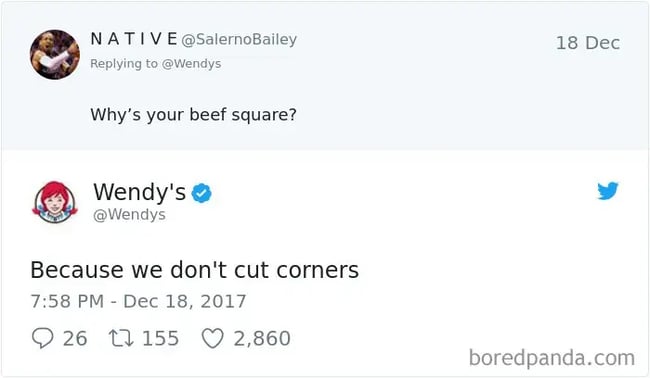
This works well because it stands out from the competition and feels fun and authentic. The internet is a hilarious place and Wendy’s is leaning into that to shape its image. But how does this impact retention?
By continuing to engage in social media, Wendy’s is staying front and center in your feed, making you think that maybe you actually want a Dave’s Single for lunch today.
Beyond that, Wendy’s knows the value of investing in digital engagement opportunities with their customer base. Their engagement efforts have already netted a 25% jump in loyalty member growth and they continue to prioritize digital interaction opportunities with customers.
7. Be transparent and authentic.
In business, transparency can mean a variety of different things. It might mean a company being open about a mistake they made or an error that happened with their product.
Alternatively, transparency might mean giving customers insight into your manufacturing process or sourcing practices.
Whatever transparency means in your industry, it’s worth giving to your customers because they’ve come to expect it from the companies they shop with.
In today’s consumer market, customers are becoming increasingly more conscious about who they spend their money with. In fact, a study showed that 88% of U.S. consumers want to shop with brands that align with their personal values. If your brand is mission-driven or you’re committed to social causes, consider sharing that with your audience.
When it comes to authenticity, you can’t build an authentic brand without transparency. Creating an authentic brand allows you to build trust and loyalty by fostering connections with customers.
By ensuring your company is open and honest with your customers and stays aligned to your company values, you’re able to deliver a consistent experience to customers that feels “human” and meaningful.
Customer Retention Strategy Example: Patagonia
Once voted #1 on “the most reputable brand in the U.S.” list, Patagonia has earned the people’s trust and loyalty and remains in the top 10 list of most reputable brands as of 2025.
Patagonia is a company that is publicly committed to environmental stewardship and ethical consumption. But they don’t just preach sustainability, they actively work towards it as a business with their manufacturing process, operations, and financial donations.
Considering Patagonia’s key audience is outdoor enthusiasts who likely care deeply about the environment, this level of activism and giving resonates deeply with customers, subsequently driving brand loyalty.
Proving their commitment to ethical consumption, Patagonia takes actions like reminding customers via advertising efforts to be more thoughtful about their purchases, encouraging them to mend their existing items, or even buy used. Their Ironclad warranty reinforces their commitment to sustainability and their confidence in the quality of their products, essentially telling their customers, “You can trust us, we’ll have your back.”

The company recognizes that their pieces are an investment, and by reassuring customers that they’re covered for repairs (instead of saying “sorry, go buy a new one!”), they create loyal customers.
Their commitment to transparency has paid off. With their profits holding steady at over $1B and an estimated 82% loyalty rate for its customer base, Patagonia has proved that a business can be authentic, transparent, and profitable all at the same time.
8. Keep innovating.
Even if you’ve built a great product and a solid customer base, you can’t get too comfortable. In this market, customers want to buy from brands that evolve to meet their needs, and customers are drawn to companies that bring new and unique offerings to the table.
If you’re not innovating to meet your customers’ evolving needs, there’s a good chance that your competitors are. By continuing to (thoughtfully) roll out new features or launch new offerings, you give your customers something to be excited about and create the potential for expansion revenue.
I work in B2B, and I can tell you that customers now expect most software tools to have an AI component. At this point, having AI in your product is table stakes, so companies are challenging themselves to build features that stand out by solving more complex problems for customers.
Customer Retention Strategy Example: Netflix
To me, Netflix is the poster child for the business model glow-up. What started as a DVD rental company has now exploded into one of the top media production companies worldwide.
If Netflix had failed to innovate, they would have gone out of business once DVDs became obsolete and we never would have been transported to Hawkins, Indiana and met the cast of Stranger Things.
Netflix first pivoted to a streaming service model in 2007, becoming an early adopter of streaming and setting themselves apart from competitors by creating an algorithm that personalized recommendations for its viewers.

Taking it a step further, Netflix again innovated by branching out into creating original content with series and movies, putting them toe-to-toe with typical box office production companies.
They’ve launched creative marketing campaigns, hosted red carpet tours, and even driven soundtracks by fictional bands to the top of the music charts (looking at you, KPop Demon Hunters).
Their original content is so successful that they’ve collaborated with brands like Fortnite, Baskin-Robbins, and even Nike.
With their upcoming launch of “Netflix House,” an immersive in-person experience coming to Philadelphia and Dallas, Netflix continues to innovate in a way that drives customer loyalty and creatively engages with their fanbase.
Netflix retains its customers by continuing to innovate and focusing on creating a unique experience for its subscribers. With their personalized algorithm and unique programming that you can’t find anywhere else, Netflix manages to maintain customer loyalty despite implementing price increases and the addition of advertisements.
9. Personalize the customer experience.
When I worked for a marketing chatbot company, I had frequent conversations with my customers about what level of personalization was appropriate and what might feel too intrusive.
While it’s true that personalization is a delicate balance, the majority of customers actually expect a personalized shopping experience, according to McKinsey. This shows that when done properly, personalization pays off.
The data overwhelmingly points to the benefits of leveraging personalization in your customer experiences, indicating that personalized experiences result in customers buying more, purchasing more frequently, and remaining loyal over time.
Don’t shy away from leveraging personalization in a way that’s helpful to the customer and adds value.
If you’re in B2B or B2C, consider creating experiences tailored to your customer personas or by product line. Collect relevant data during onboarding like the users role, their use case, and the team they’re on so that you can offer up personalized workflows and helpful content.
In D2C, you can personalize product recommendations based on a variety of behaviors and datapoints you’ve likely already collected. Suggesting different products based on browsing and purchase history is an easy way to accomplish this. You could also segment your customers and create unique offerings for each segment based on the relevant criteria.
Customer Retention Strategy Example: Spotify
Spotify is #1 in the music streaming space, leading in both subscribers and market share against its competitors. Its investment into personalization is no doubt the key to its success, with experts contributing Spotify’s growth less to the volume of music it hosts and more to its personalization engine.
By studying customer behavior to create a personalization engine, Spotify addressed the “choice paralysis” that existed with music streaming services. Spotify leverages AI to analyze your listening behavior, including what you’re listening to, when you listened to it, and what helped you find and choose the content. From there, it creates recommendations for you to discover similar content.

Spotify uses that personalized content to create habit loops that keep users engaged. Features like the Daily and Weekly Updates get users to open the app regularly, and then when they find a song they like, they get the emotional “reward” of that action and a habit is formed.
Since Spotify’s AI engine is always learning, your experience with the app continues to evolve and never feels stale. Since customers invest so much time curating playlists and training the model to their preferences, it deters them from switching to other services.
And let’s not forget the social connection that Spotify has brilliantly crafted with things like Spotify Wrapped. Users can share their personal listening habits with others, turning their Spotify experience into an emotional story that connects them with other music fans.
Looking for tools to help you personalize the customer experience? I really like this example of how Exodus Adventures leveraged Hubspot’s Marketing Hub, Sales Hub, and Service Hub to create an end-to-end personalized experience for their customer’s somewhat complex journey.
10. Identify risk early and act on it.
All of the above strategies are important, but perhaps the most important strategy to implement is the ability to detect churn risk early and mitigate it.
If you’re Spotify, for example, you might recognize that a user hasn’t logged in lately, and send them a notification or email enticing them to get back into the app.
If you’re in B2B, you’ll definitely want to build some risk mitigation procedures based on things like weekly or monthly active use, product-specific milestones, and negative feedback. This could look like:
- An automated email to the account team notifying them of the specific risk indicator.
- An automated email to an inactive customer encouraging them to log back in and complete a specific workflow.
- An auto-reply email that goes back to a customer who submitted negative feedback in a survey, coming from someone in the C-suite.
By tracking your customers’ behavior and creating triggers to notify your company of risk, you can act early to try to re-engage customers or offer incentives for them to stay.
Customer Retention Strategy Example: Audible
Audible has convinced me to stick around more than once with its customer retention strategies. When you start to cancel your Audible subscription, you’re usually offered some sort of promotion to stick around, like a reduced price for the next couple of months.
Audible also allows you to pause your membership periodically. They usually offer this first if you try to cancel, but you can do it outside of cancellation as well. It’s a nice way for users to take a financial break from the product while helping Audible retain customers and avoid cancellations.
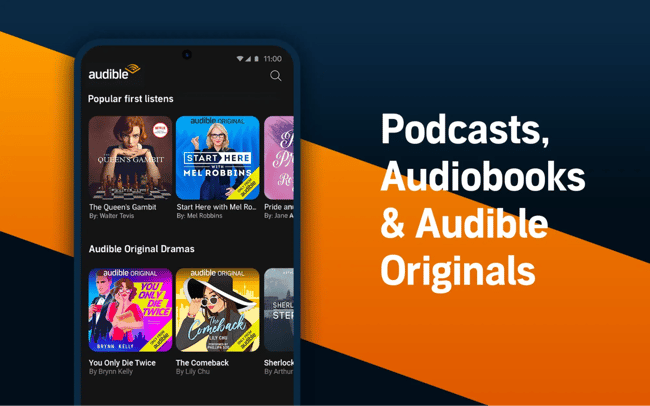
Audible recognizes when a user has an unused credit and will email them to remind them to use it, encouraging users to get back into the app and shop for a new title.
A tricky tactic that Audible also uses is requiring customers to use their credits or lose them before canceling. If your credits are piling up and you finally decide to cancel your subscription, Audible requires you to first shop for titles and redeem your credits if you prefer not to lose them. This often results in delaying your cancellation (or if you’re like me, moving on to the next thing and just forgetting altogether).
Audible also frequently runs promotions for new customers, so if you do end up canceling, chances are you can sign back up with a great promotion again in the future, increasing the rate of return customers.
By proactively emailing subscribers about unused credits and enticing users with promotions to stick around, Audible has created a solid risk mitigation strategy.
Hopefully, this list inspires you and gives you ideas for launching your own customer retention strategies. Now, let’s look at the benefits of creating customer retention programs.
Customer Retention Programs
A customer retention program is a specific initiative designed to encourage customer loyalty. Customer retention programs can be company-led, such as instituting a customer onboarding process, or customer-led, such as downloading and using a mobile app to make purchases.
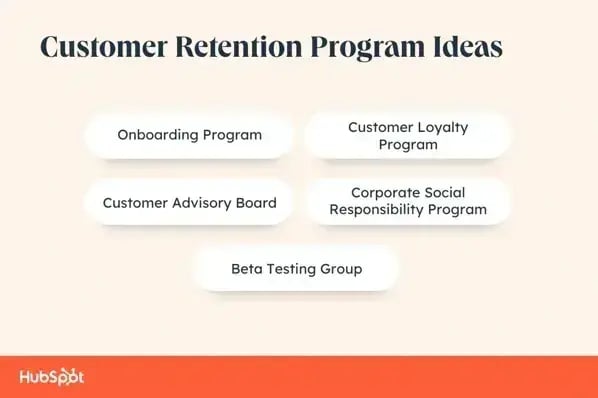
Customer Retention Program Ideas
There are several types of customer retention programs you can start for your business. If you’re not sure which is right for your company, I’ve curated this list of client retention programs you can implement to delight your existing customers.
1. Onboarding Program
Onboarding is a customer success function that teaches new customers how to use your product or service and enables them to get the right initial settings for them to start off strong in terms of adoption.
Rather than learning by themselves, customers are taught by a company representative who personalizes the initial setup and training according to their business goals and use cases.
This program can help customers save time and help them understand how the product can achieve their overarching business goal.
I think onboarding programs are an effective customer retention tool because they prevent churn with new customers. Embedding customers within your product ensures adoption so they can complete their goals on time.
Example: At HubSpot, we offer a one- to three-month onboarding process where company representatives work with customers once or twice a week. This helps keep our customers happy and provides insight into common roadblocks.
2. Customer Loyalty Program
While it’s important to focus on customers who are at risk of churn, don’t forget your loyal customers either. One way to foster these existing relationships is to build a customer loyalty program.
A customer loyalty program can reward customers for their continued commitment to you and your company. The more they shop and interact with your business, the more they’re rewarded.
I’ve found this keeps customers happy because they’re getting more from the experience than just your product or service.
Example: Many companies offer a point-based program that gives customers points every time they make a purchase. After they earn a certain amount of points, customers receive a free product or discount.
3. Customer Advisory Board
As I mentioned above, your most loyal customers are also your most valuable ones — not just because of the money they spend but also for the information they provide.
They tell you why they love your brand so much and make suggestions as to where you can improve it.
Creating a panel of these customers can help you fine-tune products and services at your business. Additionally, you can increase customer advocacy by encouraging participants to publicly share their reviews.
Example: I’ve found that Customer Advisory Boards that have a routine cadence to discuss feedback, opportunities for improvement, common challenges, and testimonials will help maintain rapport when attracting and engaging potential leads in the future.
4. Corporate Social Responsibility Program
Your company is more than just a product or service. Customers look at everything your business buys, sells, and advertises to its target audience.
If they sense any inconsistency between your brand’s messaging and its actions, they’ll be quick to recognize the ingenuity. Instead, I believe it’s important to get involved with your customers beyond products and services.
Example: Think about your customers’ values and create a Corporate Social Responsibility (CSR) program that pursues a moral goal. While your initiative doesn’t have to be as ambitious, this is a great way to demonstrate your commitment to their needs.
5. Beta Testing Group
Similar to the feedback loop, beta testing (a form of user testing) groups serve a dual purpose.
They provide your business with specific, actionable observations from the customer’s POV, and they keep customers invested in the new feature your company is beta testing.
Example: Beta testers are usually an exclusive group since every customer isn’t asked to give their feedback on a new feature due to bandwidth limitations. The exclusivity alone is usually enough to entice customers to commit.
Ideally, different customer retention programs work hand-in-hand to create a customer experience that cultivates loyalty, positive sentiment, and makes customers more willing to continue purchasing.
Finding the Right Strategy for Customer Retention
Customer retention is critical for every business, and by implementing some of the strategies and programs I’ve listed here, you’re setting your company up for long-term financial success.
I hope the strategies and programs we covered get you excited about building a customer retention program of your own that’s tailored to your customers and your company’s needs.
By focusing on things like your customer experience, identifying risk early, creating strong onboarding and education programs, and helping your customers see value quickly with your product, you create a framework for building loyal customers.
Editor's note: This post was originally published in September 2019 and has been updated for comprehensiveness.
Customer Retention
.png?width=112&height=112&name=Image%20Hackathon%20%E2%80%93%20Horizontal%20(26).png)
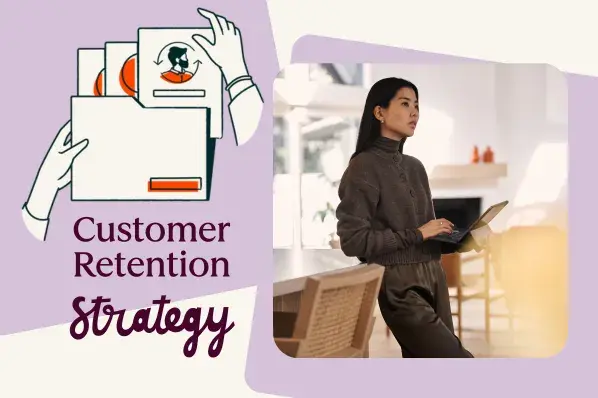
.webp)
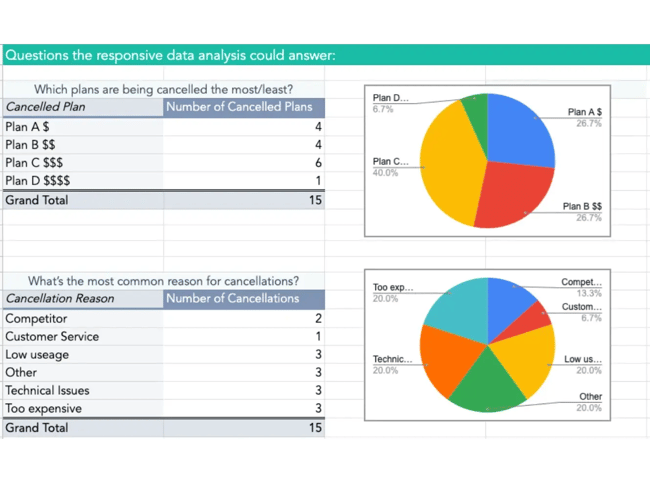
-2.png)
![7 Customer Acquisition Challenges You Might Face This Year [New Data]](https://53.fs1.hubspotusercontent-na1.net/hubfs/53/customer%20acquisition%20%20(1).webp)



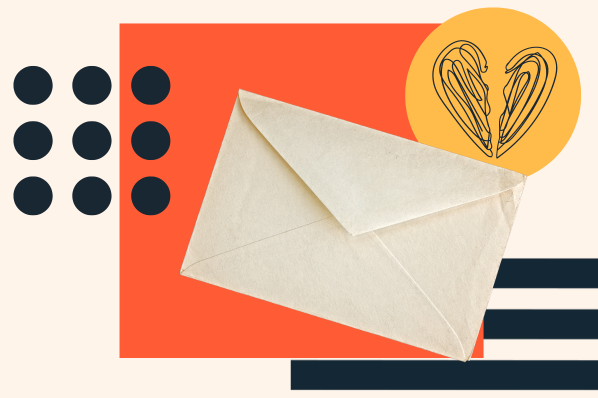
![7 Secrets for Getting Repeat Customers That Stick Around [Consumer Data]](https://53.fs1.hubspotusercontent-na1.net/hubfs/53/repeat-customers.jpg)


